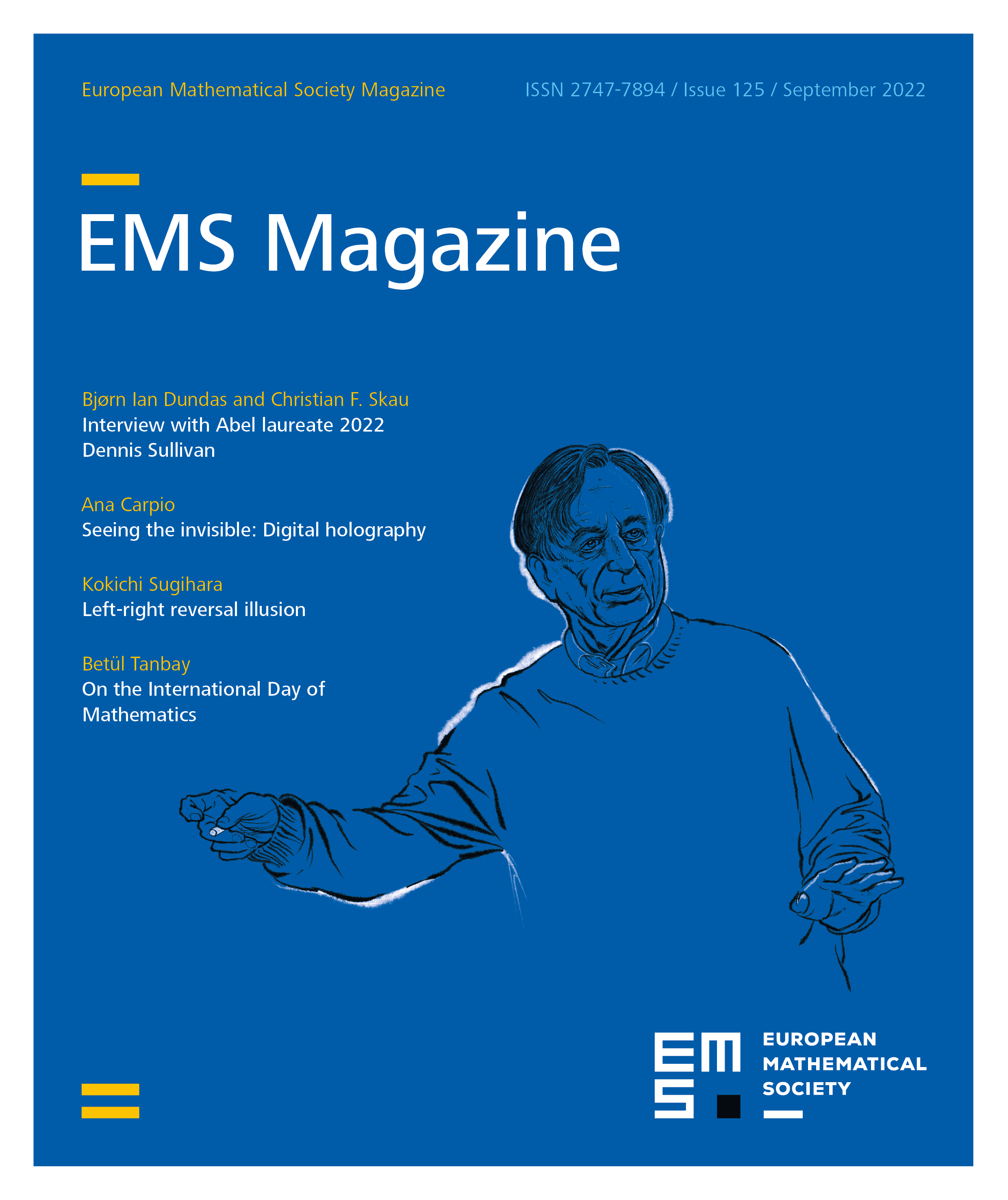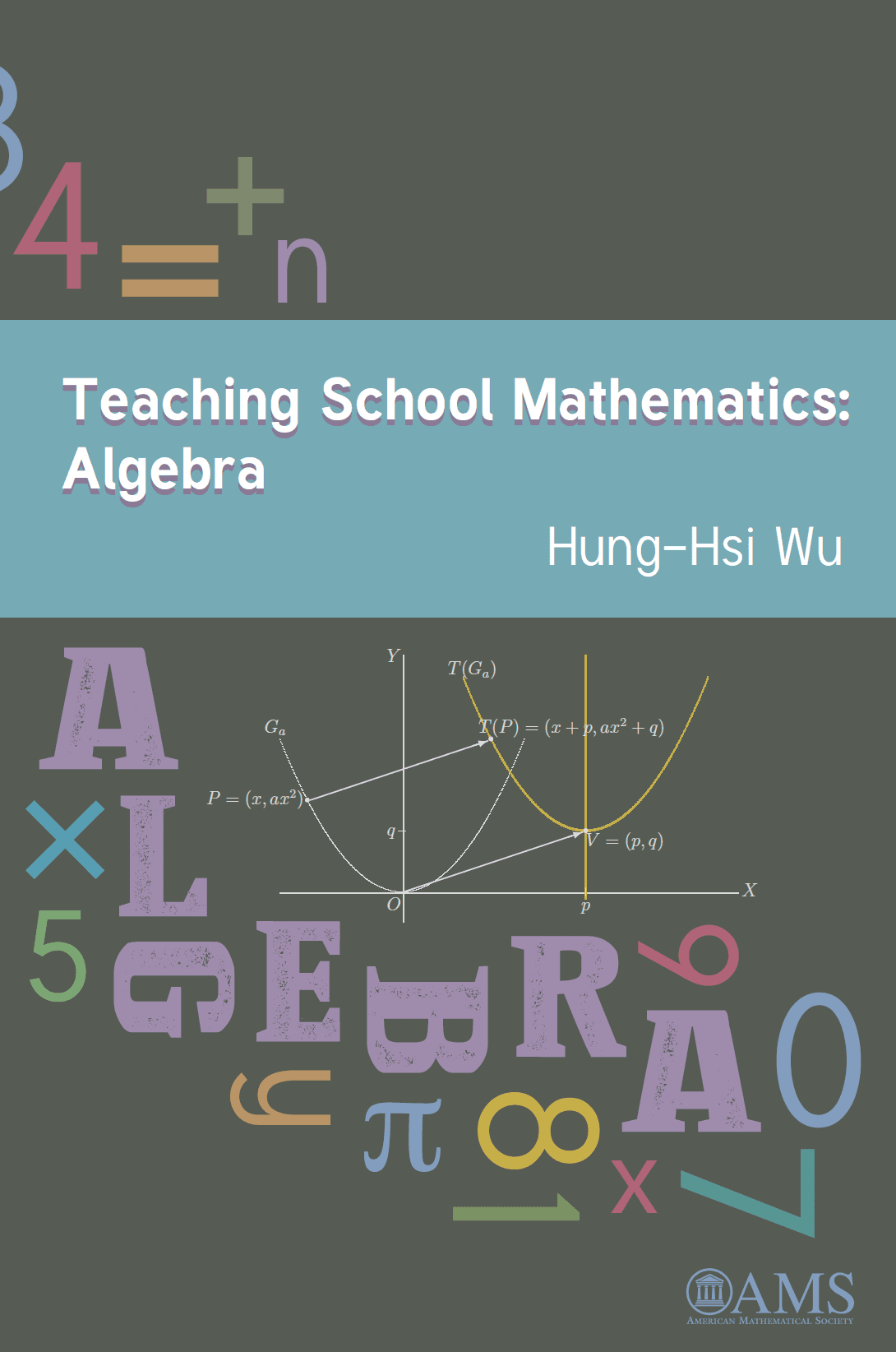All rights reserved.
This is the third book in a series of six covering the K-12 curriculum, as an instrument for the mathematical education of schoolteachers. It follows two volumes entitled “Understanding Numbers in Elementary School Mathematics” and “Teaching School Mathematics: Pre-Algebra”, and it completes the presentation of the mathematical topics included in the K-8 curriculum. With numbers and operations, finite probability and an introduction to geometry and geometric measurement covered in the previous two volumes, here the author deals with the topics that can be found in any middle school or high school introductory course on algebra: linear equations in one and two variables, linear inequalities in one and two variables, simultaneous linear equations, the concepts of a function, polynomial functions, exponents, and a detailed study of linear and quadratic functions. The volume also contains a very helpful appendix with a list of assumptions, definitions, theorems, and lemmas from the previous pre-algebra volume.
Repeating the advice given in the review of the second book in the series, I strongly recommend reading first the review of the first volume (António de Bivar Weinholtz, Book Review, “Understanding Numbers in Elementary School Mathematics” by Hung-Hsi Wu. Eur. Math. Soc. Mag. 122 (2021), pp. 66–67; https://ems.press/content/serial-article-files/15117). There, one can find the reasons why I deem this set of books a milestone in the struggle for a sound mathematical education of youths. I shall not repeat here all the historical and scientific arguments that sustain this claim. However, I wish to restate, regarding this third volume as well, that although it is written for schoolteachers, as an instrument for their mathematical education (both during pre-service years and for their professional development), and to provide a resource for authors of textbooks, its potential audience should be wider. Indeed, I believe that it should include anyone with the basic ability to appreciate the beauty of the use of human reasoning in our quest to understand the world around us and the capacity and will to make the necessary efforts, which are required here as for any enterprise that is really worthwhile.
As in the previous volumes, the author sets out to explain why, in his view, for the specific topics treated in each one of the books – here introductory algebra – the goal of getting students to properly learn these topics seems to have been so much out of reach, at least for the last few decades. He finds ample evidence, after such a long period of time of observing so many frustrated attempts to “renew” the teaching of school mathematics, that students fail to learn algebra not because they don’t like the way it is taught, but because they find the core of what they are taught to be incomprehensible. As in previous volumes, the author calls “textbook school mathematics (TSM)” the content of what has generally been offered to students under the name of “mathematics”, and in particular of “algebra”, and argues that in fact it does not satisfy five fundamental principles of this subject:
1. Precise definitions are essential.
2. Every statement must be supported by mathematical reasoning.
3. Mathematical statements are precise.
4. Mathematics is coherent.
5. Mathematics is purposeful.
The precise implications of these principles, of course, depend on the grade we are dealing with, but if they are not constantly kept in mind by designers of curricula, textbook authors, and teachers, and if they are not progressively conveyed to students, no real learning of mathematics is possible. While being essential when dealing with any part of the school math curriculum, these principles are of particular importance when dealing with algebra; it is also in algebra that some of the most harmful misunderstandings have tainted TSM, along with the mistreatment of fractions that was widely analyzed in the previous books. With the explicit purpose of freeing school mathematics from these unfortunate mistakes, the author describes them with due detail, as far as school algebra is concerned, and he anticipates how the proper presentation of this subject in this volume makes possible to avoid all of them. Let us briefly review this list of “critical subjects”.
(1) One of the more visible characteristics of algebra is the necessity to use a set of symbols that goes beyond those that represent specific numbers, basic operations and equality and order, extensively used in basic arithmetic since the first grades. The proper use of symbols is one of the important features of mathematics in general, and the learning of introductory algebra is one of the fundamental steps for the acquisition of this kind of skill. But the term “variable” that occurs naturally in this stage and in several other situations in mathematics is not in itself a mathematical concept, although it can occur in precise mathematical expressions like “a real function of two real variables” or it can be used in informal explanations, where “variable” is just a shorthand for “an element in a set”. Nevertheless, TSM has risen “the understanding of the concept of variable” to the dignity of a crucial step in the learning of algebra, attempting definitions of “variable” like “a quantity that changes” and that, not having any precise sense whatsoever, only end up in confusing the minds of teachers and students.
(2) This confusion gets worse when one tries to use this so-called “concept of variable” to define what an equation is, as is common in TSM.
(3) As a geometric foundation of the properties of similar triangles is absent from TSM, any attempt to give a proper treatment of the concept and properties of the slope of a straight line is bound to be unsuccessful.
(4) This mistreatment prevents an adequate study of this most important relation between algebra and geometry that is the study of first-order linear equations in two variables and systems of two such equations and their graphs (or “sets of solutions”, in their geometrical representation), namely why the graphs of these equations are exactly the non-vertical straight lines.
(5) For the same reason, it becomes impossible in TSM to properly learn the algebraic characterization of parallel and perpendicular lines. The “solution” often adopted in TSM to define parallelism and perpendicularity of lines by using the characteristic properties of slopes in each case (respectively equal slopes and the product of slopes equal to , except in the case of the perpendicularity of a pair of horizontal-vertical lines) is totally inadequate, as students by that time are already familiar with the concepts of parallel and perpendicular lines, and so they deserve an explanation on how the latter can be related to the aforementioned properties of slopes, not as new definitions, but as theorems to be proven.
(6) The concept of constant rate (in particular, constant speed) is one that students have met on several occasions when they reach the stage of an introductory algebra course, but this is the proper opportunity to clarify these concepts. However, they are never defined in TSM and instead TSM engages in an abstruse discussion of a “concept” called “proportional reasoning” which is supposed to be the basis of the understanding of rate, although it is hardly ever given a proper definition. Once again, the possible meanings of this so-called “proportional reasoning” can and should be examined thoroughly so that much of the aforementioned abstruse approach can be eliminated from school curricula and the really fundamental concepts that it aims to replace can be put on a firm mathematical foundation.
(7) The graph of an equation (sometimes called the graphical representation of the set of its solutions) is also in severe want of a precise definition in TSM. This leads to a situation in which it is impossible to understand why the solution of two simultaneous linear equations is the point of intersection of the two lines that are the graphs of the equations.
(8) The same can be said about the graph of linear inequalities in two variables.
(9) The introduction of rational exponents is also often an occasion for the frequent confusion in TSM between definitions and theorems.
(10) Finally, the treatment of quadratic equations and functions is often chaotic in TSM, without the unifying proper use of their graphs.
Each one of these serious mathematical issues and others that are presented in due course in this volume are dealt with; this provides the tools to fix them and replace TSM by a sound mathematical treatment of introductory school algebra.
Also with respect to this topic, I have to state that, given the availability of this set of books, there is no excuse left for schoolteachers, textbook authors and government officials to persist in the unfortunate practice of trying to serve to students this fundamental part of school mathematics in a way that is in fact unlearnable …
As in the previous volumes of this series, on each topic the author provides the reader with numerous illuminating activities, and an excellent choice of a wide range of exercises.
Hung-Hsi Wu, Teaching School Mathematics: Algebra, American Mathematical Society, 2016, 274 pages, Hardback ISBN 978-1-4704-2721-4, eBook ISBN 978-1-4704-3019-1
Cite this article
António de Bivar Weinholtz, Book review: “Teaching School Mathematics: Algebra” by Hung-Hsi Wu. Eur. Math. Soc. Mag. 125 (2022), pp. 50–52
DOI 10.4171/MAG/106
